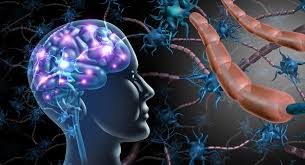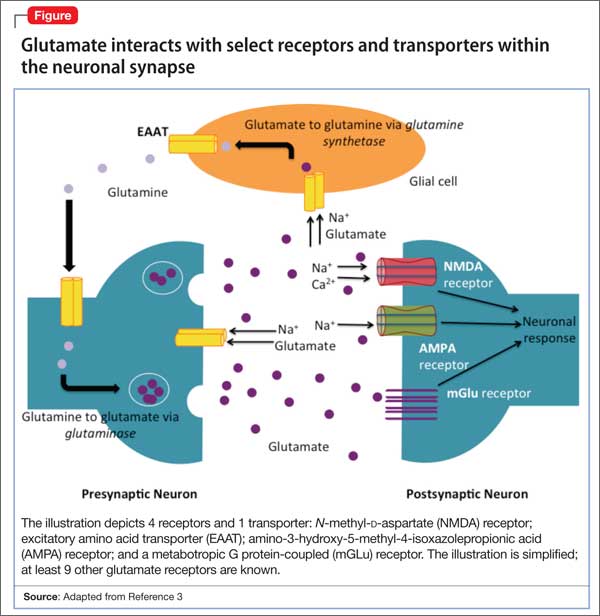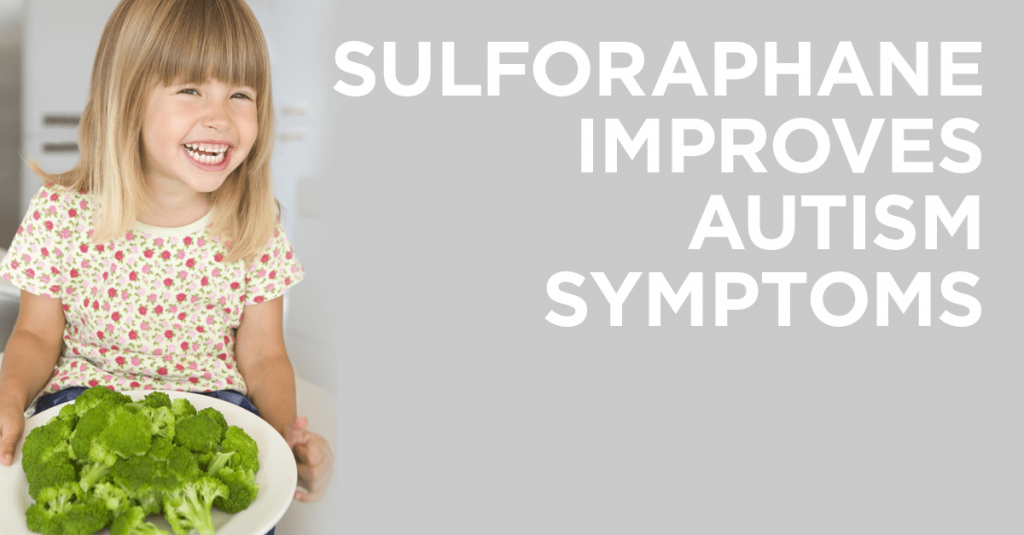The Mind Blowing Healing Power Of Sulforaphane in Broccoli That You Wish You Had Known Earlier
Science has proven time after time that food is potent medicine and the sulforaphane in broccoli sprouts is no exception to the rule..
Broccoli, for example, has a solid scientific foundation showing it’s one of the most valuable health-promoting foods around.
While it contains several health-promoting compounds, one of the most widely studied is sulforaphane.
The cancer-fighting properties of sulforaphane are perhaps the most well-known. It also benefits your heart and brain, boosting detoxification and helping prevent and/or treat high blood pressure, heart disease, Alzheimer’s and even autism.
Now, researchers report sulforaphane may also be helpful in the treatment of schizophrenia.
Sulforaphane in Broccoli May Improve Cognition in Patients With Schizophrenia
 An initial study, published in Clinical Psychopharmacology and Neuroscience in 2015, involved just 10 outpatients with schizophrenia.
An initial study, published in Clinical Psychopharmacology and Neuroscience in 2015, involved just 10 outpatients with schizophrenia.
Patients took 30 milligrams (mg) of sulforaphane glucosinolate per day for eight weeks.
As reported by the authors:
“Clinical symptoms using the Positive and Negative Syndrome Scale (PANSS) and cognitive function using the Japanese version of Cog State battery was evaluated at the beginning of the study and at week 8.
A total of 7 patients completed the trial.
The mean score in the Accuracy component of the One Card Learning Task increased significantly after the trial …
This result suggests that SFN [sulforaphane] has the potential to improve cognitive function in patients with schizophrenia.”
Schizophrenia Linked to Chemical Imbalances in the Brain
 More recently, a series of three animal and human studies by researchers at Johns Hopkins School of Medicine suggest sulforaphane may also benefit patients with schizophrenia by helping to re-balance the glutamate levels in their brain.
More recently, a series of three animal and human studies by researchers at Johns Hopkins School of Medicine suggest sulforaphane may also benefit patients with schizophrenia by helping to re-balance the glutamate levels in their brain.
As reported by Neuroscience News:
“Schizophrenia shows up as hallucinations, delusions and disordered thinking, feeling, behaviour, perception and speaking.
Drugs used to treat schizophrenia don’t work completely for everyone. And they can cause a variety of undesirable side effects. This includes metabolic problems increasing cardiovascular risk, involuntary movements, restlessness, stiffness and ‘the shakes.’”
According to Dr. Akira Sawa, director of the Johns Hopkins The Schizophrenia Centre, “It’s possible that future studies could show sulforaphane to be a safe supplement.
People at risk of developing schizophrenia shall take it. This would be a way to prevent, delay or blunt the onset of symptoms.”
One of the studies in this series, published January 9, 2019, in JAMA Psychiatry, assessed differences in brain metabolism between 81 schizophrenic patients and 91 healthy controls.
It found schizophrenics had lower levels of key brain chemicals associated with the disease — glutamate, N-acetyl aspartate, GABA and glutathione.
Also in their anterior cingulate cortex, a brain region involved in executive function, emotional affect and cognition.
According to the paper “Cognitive and Emotional Influences in Anterior Cingulate Cortex,” this brain region appears to be “the brain’s error detection and correction device.”
And “is part of a circuit involved in a form of attention that serves to regulate both cognitive and emotional processing.”
In the brain, glutamate — an excitatory neurotransmitter — plays an important role in brain cell communication…
…and lower levels appear to cause both schizophrenia and depression.
Schizophrenics also had lower levels of N-acetyl aspartate in the orbito-frontal region.
This is an area that triggers cognitive processing and decision-making, as well as the thalamus.
And it participates in the relaying of sensory signals and the regulation of consciousness.
They also had lower levels of glutathione in the thalamus.
Glutathione, a master antioxidant produced by your body, is made up of glutamate, cysteine and glycine.
And is a physiologic reservoir of neuronal glutamate.
Modulating Glutamate Levels May Improve Schizophrenia

For the second study in the series, the researchers focused on the management of glutamate in the brain.
As reported by Neuroscience News, they wondered whether faulty glutamate management might be a key problem in the disease.
And whether drugs could be used to “shift this balance to either release glutamate from storage when there isn’t enough.
Or either send it into storage if there is too much.”
So, in this study, published February 12, 2019, in PNAS, they blocked an enzyme that turns glutamate into glutathione in the brain cells of rats.
A drug called L-Buthionine sulfoximine was deployed, thereby allowing glutamine to be used up.
“The researchers found that these nerves were more excited and fired faster. Which means they were sending more messages to other brain cells.
The researchers say shifting the balance this way is akin to shifting the brain cells to a pattern similar to one found in the brains of people with schizophrenia,” Neuroscience News explains.
Next, to increase the level of glutamine stored as glutathione, they used sulforaphane.
As it activates a gene that makes an enzyme required for the synthesis of glutathione from glutamate.
As expected, this slowed the speed with which neurons fired.
In other words, it helped normalize the brain cells, allowing them to behave in a manner more like healthy controls. Dr. Thomas Sedlak, Ph.D., assistant professor of psychiatry and behavioral sciences told Neuroscience News:
“We are thinking of glutathione as glutamate stored in a gas tank.
If you have a bigger gas tank, you have more leeway on how far you can drive, but as soon as you take the gas out of the tank it’s burned up quickly. We can think of those with schizophrenia as having a smaller gas tank.”
Sulforaphane in Broccoli Boosts Glutathione Levels in the Brain
 In an earlier pilot study (counted as the third in this series) by the same team, published in the May 2018 issue of Molecular Neuropsychiatry, they used mice and healthy human subjects to assess the effect of sulforaphane on glutathione levels in the brain.
In an earlier pilot study (counted as the third in this series) by the same team, published in the May 2018 issue of Molecular Neuropsychiatry, they used mice and healthy human subjects to assess the effect of sulforaphane on glutathione levels in the brain.
Here, they specifically excluded patients with a history of psychiatric illness.
As explained by the authors:
“The participants completed two visits, scheduled 7 days (1 week) apart.
The participants took 100 µmol sulforaphane as standardized broccoli sprout extract in the form of 2 gel capsules.
And they ingested the extract each morning for 1 week …
Urine and blood specimens were collected prior to the first dose of broccoli sprout extract and within 4 h of the final dose.
MRS [magnetic resonance spectroscopy] scans were performed prior to the first dose and within 4 h of ingesting the final dose …
Following 1-week administration of sulforaphane, the study participants demonstrated a significant augmentation of GSH in non-monocytes that include a mixture of T cells, B cells, and NK cells.
The GSH level was 9.22 nmol/mL before sulforaphane administration and 12.2 nmol/mL following sulforaphane administration, a 32% increase …
We report that a short-term administration of sulforaphane was sufficient to significantly increase peripheral GSH levels in human subjects.
We found an increase in GSH in the HP [hippocampus], but not elsewhere in the brain regions assessed.
The peripheral GSH ratio had a strong and significantly positive correlation with brain GSH levels in the THAL [thalamus] upon sulforaphane treatment …
In a submitted study, we will report that peripheral GSH levels may be correlated with cognitive functions.
We thus posit the significance of exploring the possible correlations between peripheral GSH and clinical/neuro-psychological measures and the influence of sulforaphane on such functional measures that are altered in neuropsychiatric disorders.
The present study is a key first step toward such future studies.”
In summary, these findings suggest sulforaphane might be a safe alternative to help reduce psychosis and hallucinations in schizophrenic patients. Although the researchers warn more studies must take place to identify optimal dosing and assess long-term effects.
Study Series Suggests Sulforaphane In Broccoli May Improve Symptoms of Autism

Another series of studies suggests cruciferous vegetables high in sulforaphane might benefit those with autism spectrum disorder (ASD), primarily by up regulating genes that protect against oxidative stress, inflammation and DNA damage, “all of which are prominent and possibly mechanistic characteristics of ASD,” the authors say.
Sulforaphane also boosts antioxidant capacity, glutathione synthesis, mitochondrial function, oxidative phosphorylation and lipid peroxidation, while lowering neuro-inflammation.
According to the researchers, these characteristics also make it suitable for the treatment of ASD.
The first study, published in 2014, found daily treatment with dietary sulforaphane significantly reduced the severity of “socially impaired behaviour” in children with ASD after 18 weeks.
Improvements became obvious (compared to those in the placebo group) at four weeks of treatment.
At 18 weeks, the sulforaphane treatment group had a 34% reduction in Aberrant Behaviour Checklist (ABC) scores and a 17% reduction in Social Responsiveness Scale (SRS) scores. According to the authors:
“A significantly greater number of participants receiving sulforaphane had improvement in social interaction, abnormal behaviour, and verbal communication. Upon discontinuation of sulforaphane, total scores on all scales rose toward pre-treatment levels.”
Case Series Highlights Success Stories With Sulforaphane Treatment

The second study, published in 2017, presented a case series follow-up of patients who continued the sulforaphane treatment after the first study ended.
Here’s a limited outtake from the narrative provided by one of the families whose son’s name is “R”:
“R’s parents wanted to help him: ‘He would make constant noises and did all these abnormal motor tics; we felt like he really had no control over his behaviour and body.
And it was just noise, not functional words.
He didn’t have any expressive language.’
R’s parents saw several medical specialists who prescribed a total of 18 different medications, all of which had either minimal or negative effects on R. ‘Nothing changed the constant noises or the terrible rage attacks,’ until R took SF sulforaphane…
R’s family took him to the Lurie Centre at Massachusetts General Hospital where we were conducting the study on the effects of SF on males with ASD.
The study was a randomized double-blind placebo-controlled trial.
However, within days, R’s mother thought that he was taking SF:
‘I knew that he was on the study drug because I saw such a change so quickly.
I want to scream from the rooftops and tell people to give the kids broccoli sprouts extract because literally, it changed my life,’ reported R’s mother.
‘Now we can go to the movies, restaurants, plays, we went on vacation with another family, we go to church, we just went to a concert, things we could never do before are now possible.
I am able to have confidence and he is more confident as well.’
N.B. Such a rapid response was unusual in the context of what was observed by the physicians.
When they observed responses to supplementation, they generally took 3 or 4 weeks to become manifest.
In this case, the study team actually wondered whether the mother might be exhibiting a placebo response; however, the ABC sub-scales and both ABC and SRS overall scores for R did also change.”
New Mechanism of Action Revealed
The third paper in this series, a trial progress report published in 2018, assessed the safety, clinical effects and mechanisms of action of sulforaphane in ASD. Interestingly, this paper describes how sulforaphane mimics “the fever effect” in ASD.
This is where high fever temporarily improves behaviour in autistic children.
The researchers explain:
“Fever stimulates heat shock proteins (HSP) and cellular stress responses, leading to improved synaptic function and long-range connectivity.
Expression of gene transcription by NFE2L2 (Nrf2), which is reduced in ASD, also increases during fever.
Sulforaphane (SF), an isothiocyanate obtained from broccoli sprouts, induces HSP and Nrf2 as well as ‘cell-protective’ responses that may benefit ASD through common cellular mechanisms underlying heterogeneous phenotypes.”
While this trial was still incomplete at publication, as only 46 participants out of a planned 50 enrolled, preliminary analysis showed “26% participants improved very much at seven weeks, 38% at 15 weeks, 64% at 22 weeks, and 64% at 30 weeks,” the researchers said, adding that “preliminary results show that sulforaphane appears to be safe and effective in children with ASD.”
Sulforaphane in Broccoli Stands Out as Potential Alzheimer’s Treatment
 Sulforaphane may also be useful in the treatment of Alzheimer’s disease.
Sulforaphane may also be useful in the treatment of Alzheimer’s disease.
In a 2018 study, mice with Alzheimer’s took sulforaphane for four months, which significantly inhibited both the generation and accumulation of amyloid-beta, and alleviated several pathological changes associated with Alzheimer’s, including oxidative stress and neuro-inflammation.
The mice also demonstrated cognitive benefits, remaining normal, cognitively speaking, compared to wild-type mice at 10 months of age, which is when dementia typically begins in Alzheimer’s mice.
In tests of neurons themselves, pre-treating cortical neurons with sulforaphane protected them against injury caused by amyloid beta.
An earlier study published in 2009 revealed that antioxidants — including sulforaphane — protect cells from oxidative damage, facilitate removal of the amyloid-beta peptide and reduce abnormal protein-related causes of disease.
In studying how sulforaphane interacts with amyloid-beta to prevent various neuro-degenerative processes, researchers of a 2014 study used liquid chromatography/electrospray ionization mass spectrometry to reveal that amyloid-beta is less likely to aggregate in the presence of sulforaphane.
Another 2014 study showed that, in mice with Alzheimer’s-like lesions (induced in part by administration of aluminium), sulforaphane reduced neuro behavioral deficits by promoting the growth of new neurons (neurogenesis) as well as reducing the aluminium load.
Broccoli Provides Many Health Benefits
While this article focuses on the neurological benefits of broccoli, research has revealed a long list of health benefits associated with this cruciferous vegetable, including a reduced risk for:
| Osteoarthritis | Cancer — Studies have shown sulforaphane supports normal cell function and division while causing apoptosis (programmed cell death) in colon, prostate, breast and tobacco-induced lung cancer cells, and reducing the number of cancerous liver tumors in mice |
| High blood pressure | Heart disease |
| Kidney disease | Insulin resistance and Type 2 diabetes |
| Obesity | Allergies |
Broccoli and other water- and nutrient-rich veggies also support healthy liver function, which in turn promotes optimal functioning of your natural detoxification systems.
Broccoli sprouts, in particular, proved to help detox environmental pollutants such as benzene.
This is important for virtually everyone these days, but especially women of childbearing age.
Autistic children normally have higher levels of environmental toxins in their system, and this underlying toxic burden plays a significant role.
Healthy liver function also helps promote healthy, beautiful skin, making broccoli a good anti aging food.
What’s more, the sulforaphane in broccoli also helps repair skin damage.
Sulphoraphane in Broccoli: How to Boost Sulforaphane Benefits of Broccoli
 To boost the benefits of sulforaphane in broccoli and other cruciferous veggies, pair them with a myrosinase-containing food.
To boost the benefits of sulforaphane in broccoli and other cruciferous veggies, pair them with a myrosinase-containing food.
Myrosinase is an enzyme that converts the precursor glucosinolate, glucoraphanin, to sulforaphane.
Examples include mustard seed, daikon radishes, wasabi, arugula or coleslaw, with mustard seed being the most potent.
Adding a myrosinase-rich food is particularly important if you eat the broccoli raw, or use frozen broccoli.
Ideally, broccoli must be steamed for three to four minutes to increase the available sulforaphane content.
This light steaming eliminates epithiospecifier protein — a heat-sensitive sulphur-grabbing protein that inactivates sulforaphane — while retaining the myrosinase in the broccoli.
Steaming is important, because without myrosinase, your body cannot absorb sulforaphane.
If you opt for boiling, blanch the broccoli in boiling water for no more than 20 to 30 seconds, then immerse it in cold water to stop the cooking process.
If you prefer raw food, you’d be better off eating raw broccoli sprouts instead of mature broccoli.
According to Dr. Paul Talalay, professor of pharmacology and co-author of the 1997 study “Broccoli Sprouts: An Exceptionally Rich Source of Inducers of Enzymes That Protect Against Chemical Carcinogens,” “Three-day-old broccoli sprouts consistently contain 20 to 50 times the amount of chemo protective compounds found in mature broccoli heads.”
As a result, you can eat far less of them while still maximizing your benefits.
These findings highlight the relevance of a sufficient vitamin D status in women with breast cancer levitra 20mg generique en ligne
Hello mate, This is a great post for such a tough subject to talk about I look forward to reading many more excellent posts like this one Thanks